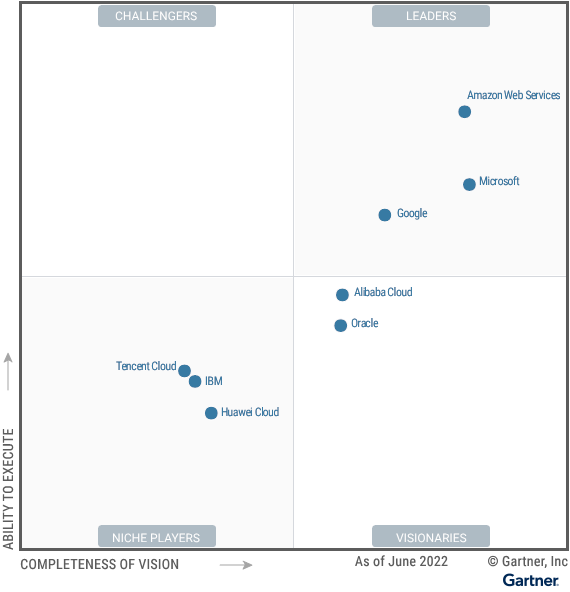Application modernization, an integral part of digital transformation, has become essential for companies wanting to expand their business growth. Many organizations are already embracing the trend of modernizing applications to improve operational efficiency and agility, align to IT investments, and stay ahead in their business initiatives by delivering an unmatched customer experience. According to Market and Markets, the global application modernization services market is projected to expand to USD 24.8 billion by 2025 from USD 11.4 billion in 2020, at a CAGR of 16.8% during the forecast period. Market disruptions and macroeconomic factors have sped up enterprise application modernization programs to support remote working, increase employee productivity, and deliver sustainable customer experiences.
Why Modernize Legacy Applications?
Most legacy applications are monolithic, making them expensive to scale and difficult to update. By embracing modern architectures, components can be deployed and scaled independently. With this, businesses get the freedom and flexibility to tailor the application modernization processes to meet their unique business needs and challenges.
Application modernization is a multi-layered and intricate process with many challenges, including knowledge and skill gap, cost constraints, performance and stability, and legacy processes. Investing in the appropriate tools and platforms is essential to transition from legacy to digital applications successfully.
A top medical laboratory was seeking a technology upgrade, as it was facing the following challenges:
- The existing user interface was not responsive, making it challenging to use on a mobile device.
- The interface didn't accommodate users with disabilities.
- Security was not in compliance with current IT standards and was not up to date.
- Java EE (Java 7) was used to create the current application. IT staff was also not skilled in the current technology and couldn't support and enhance the existing application.
The application has been in use for a long time and wasn't working well for the customers. Softura overcame these challenges by modernizing these legacy applications:
- The application was rewritten, addressing all the technical issues.
- The user interface could now support users with disabilities based on WCAG 2.1 specification
- Google Lighthouse was used to evaluate compliance.
- Active Directory and Okta were used to implement authentication.
- Updated user interface with the current branding standards.
Microsoft Azure – A Modern Toolkit for Streamlining Legacy Applications
In a recent report from Gartner, for the ninth consecutive year, Microsoft is distinguished as a leader in the magic quadrant for platform services and cloud infrastructure. The position is a testament to Microsoft’s thorough understanding of customer requirements, strong customer adoption, ongoing investments in building a unique platform, and positive feedback.
Businesses can use Microsoft's Azure Cloud Services to escalate their digital transformation initiatives and take advantage of new technologies for business benefits. The Azure Platform is particularly suited to organizations centered around Microsoft. Microsoft's Azure platform is undergoing architectural and security improvements, focusing on hybrid cloud and multi-cloud. Its operations have a geographical diversity, and it tends to serve midsized and large companies as clients.
How to Modernize Applications Using Microsoft Azure
Although organizations may find endless possibilities to strike the correct balance between time and money and increase agility, the Azure cloud platform ensures that all applications will continue to run and that resources can be scaled up and down as needed. Another undeniable reason why several organizations choose Microsoft Azure over other platforms is its ability to provide solutions for every possible app modernization scenario.
Below are the approaches that are commonly preferred for modernizing applications using Azure.
One of the world's leading Automotive Original Equipment Manufacturers (OEM) in the Mining and Construction Equipment Industry had their applications built and deployed using unsupported or obsolete technologies. Also, their internal and external applications were developed using different technology stacks, leading to inconsistent user experience, duplicate functions (email alerts, global settings), multiple user identities across apps, and a lack of Centralized Navigation or App containers.
Softura offered a complete migration of Global Extranet Applications from Windows Server 2003 On-Premises to Azure cloud. We integrated and certified modern applications, implemented strategies, such as Lift and Shift apps, and Refactor or Rebuild apps/services based on different considerations such as technology stack and framework.
In a press release, Microsoft announced that a 22% growth in server revenue and a 28% increase in cloud services revenue were driven by Azure and other cloud services revenues growing at 35% and 42%, respectively. Enterprises can significantly benefit from Microsoft Azure when embarking on a digital transformation journey. However, organizations need to look for a reliable cloud partner with the requisite know-how and skills, can align themselves with the business vision and is futuristic. Employ Softura's wide range of Microsoft Azure application modernization solutions to redefine your outdated legacy system. Our extensive years of experience in application modernization services as a reputable Microsoft Gold Partner with nine gold competencies have assisted organizations in transforming legacy systems leveraging Azure solutions. From evaluating the current scenario to application re-engineering, our certified Azure professionals can support you in restructuring your application modernization journey.
Initiate your application modernization journey with Softura today!


